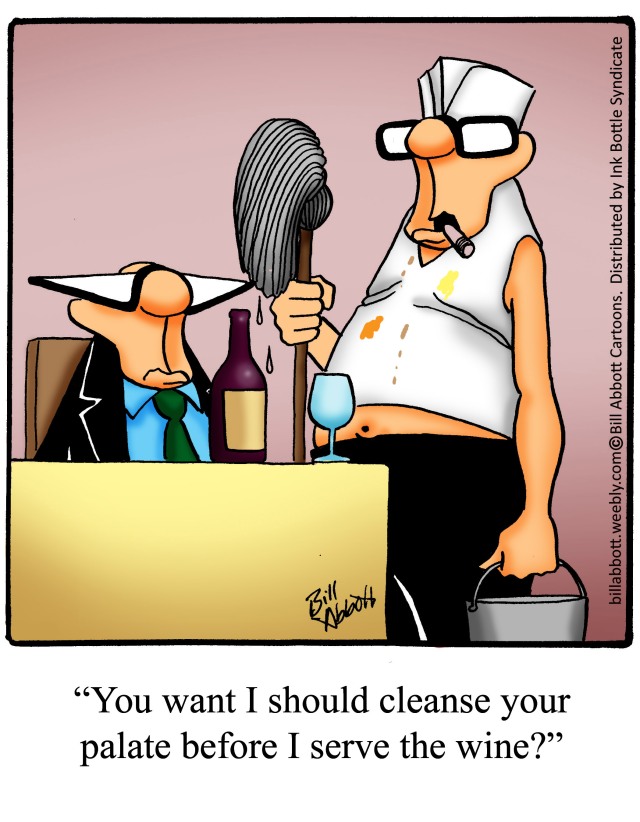This is a question that comes up VERY frequently, both from cartoonists and non-cartoonists alike: where do I get my ideas or how do I write my gags. Some of the questions may be in the hope of recommending me for mental help or to keep me occupied long enough to check my head for dents or lumps. Others, I assume, because they genuinely want to know. So here goes.
Because I have two very distinctly different cartoons, “Spectickles” about two very crabby married people in a host of odd settings, and “Percenters” business cartons which focus primarily on – you guessed it – business, and politics in a non-partisan way, presuming that all politicians are, of course, soulless human sharks, I still use the same basic methods for coming up with ideas.
Let’s take word association first. Say I’d like to come up with a cartoon for “Spectickles” which would include a specific topic such as wine. Since my “Spectickles” wine cartoons have proven pretty popular, those are always good ones to have ideas for. So to begin, we have the word from which we’ll launch the process: wine. From here, it’s something of a word associative stream of consciousness method (No way did I get so many big words in one sentence! Mom! Did you see that?). Anyway, what are some of the things we associate with wine? Wine glasses. Wine barrels. Grapes. Vineyards. Wine tasting. Alcohol. Drinking. What types of people tend to drink wine? Better yet, who would you not expect to be drinking wine? Cavemen? What about monsters? Frankenstein – how could wine fit into a cartoon with Frankenstein as the main character? Hmm… pretty good, but not quite there. Dracula and wine. Wolfman and wine. Kind of hitting a wall there. More word and phrase association: palate – cleansing the palate. How could cleansing the palate be funny? Cleansing and palate. What would you not expect to use for cleansing the palate? Aha! Got it! Here is the completed cartoon developed from the above process:
And that, in a nutshell, is it. There are a number of methods used in gag-writing other than word association. You can start with a setting first: castle, desert island, office, or whatever and begin from there. We’ll talk more about other writing methods and how they work in a future blog post.

